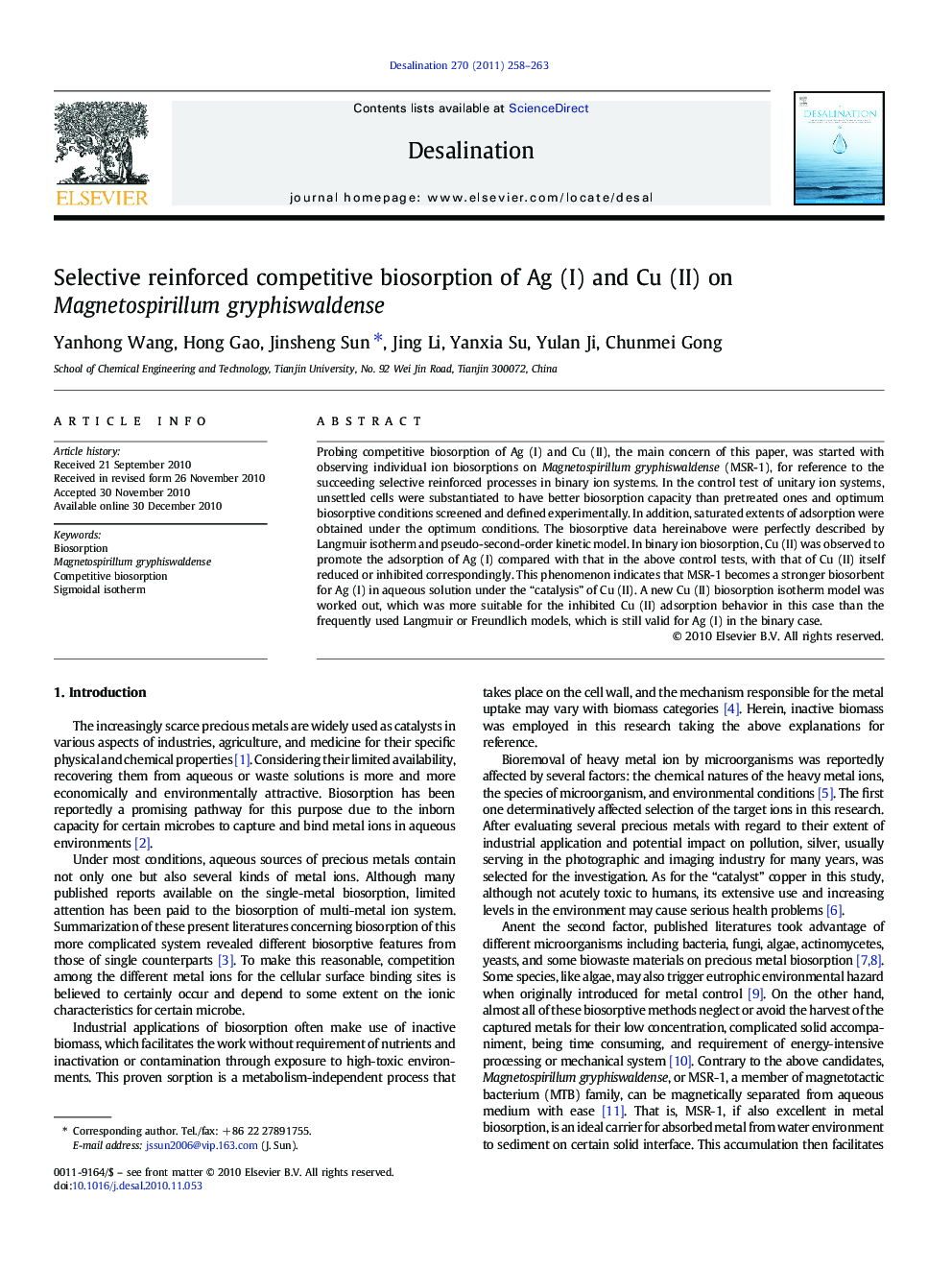| Article ID | Journal | Published Year | Pages | File Type |
|---|---|---|---|---|
| 625278 | Desalination | 2011 | 6 Pages |
Probing competitive biosorption of Ag (I) and Cu (II), the main concern of this paper, was started with observing individual ion biosorptions on Magnetospirillum gryphiswaldense (MSR-1), for reference to the succeeding selective reinforced processes in binary ion systems. In the control test of unitary ion systems, unsettled cells were substantiated to have better biosorption capacity than pretreated ones and optimum biosorptive conditions screened and defined experimentally. In addition, saturated extents of adsorption were obtained under the optimum conditions. The biosorptive data hereinabove were perfectly described by Langmuir isotherm and pseudo-second-order kinetic model. In binary ion biosorption, Cu (II) was observed to promote the adsorption of Ag (I) compared with that in the above control tests, with that of Cu (II) itself reduced or inhibited correspondingly. This phenomenon indicates that MSR-1 becomes a stronger biosorbent for Ag (I) in aqueous solution under the “catalysis” of Cu (II). A new Cu (II) biosorption isotherm model was worked out, which was more suitable for the inhibited Cu (II) adsorption behavior in this case than the frequently used Langmuir or Freundlich models, which is still valid for Ag (I) in the binary case.
Research Highlights►Probing competitive biosorption of Ag (I) and Cu (II) was started with observing individual ion biosorptions on Magnetospirillum gryphiswaldense (MSR-1). ►Cu (II) in the binary solution, something like catalysts to reactants, could promote the adsorption of Ag (I) by MSR-1. ►Langmuir and Freundlich models could not describe the Cu (II) biosorption well. ►A new Cu (II) sigmoidal biosorption isotherm model was figured out in this unusual case.
